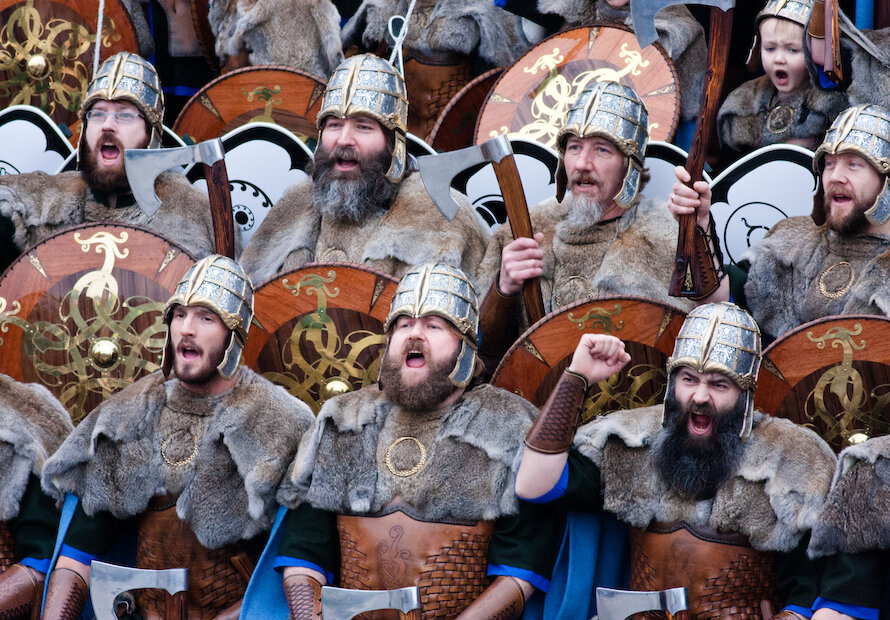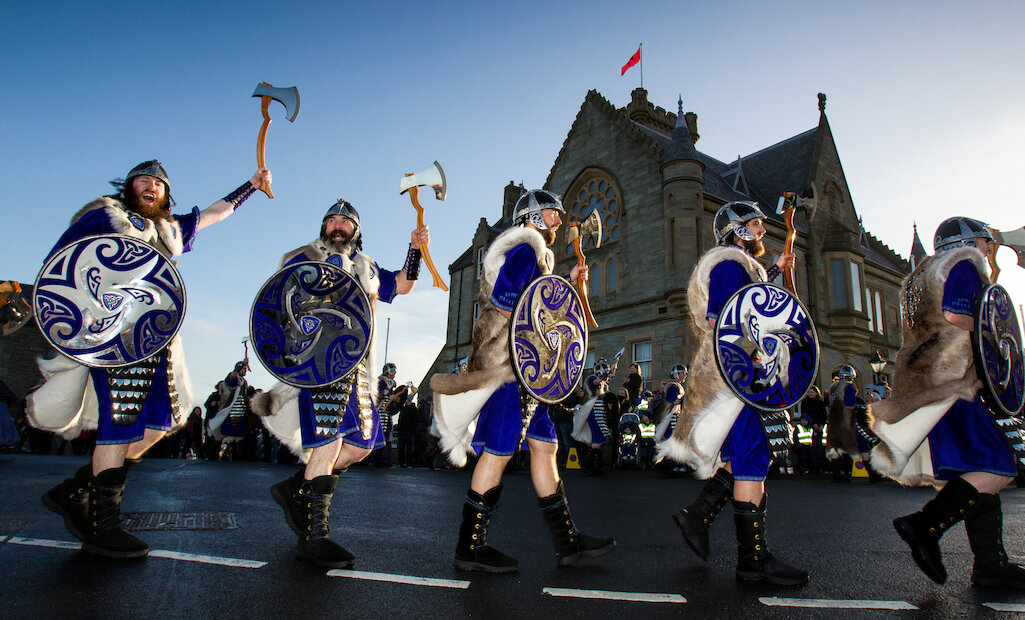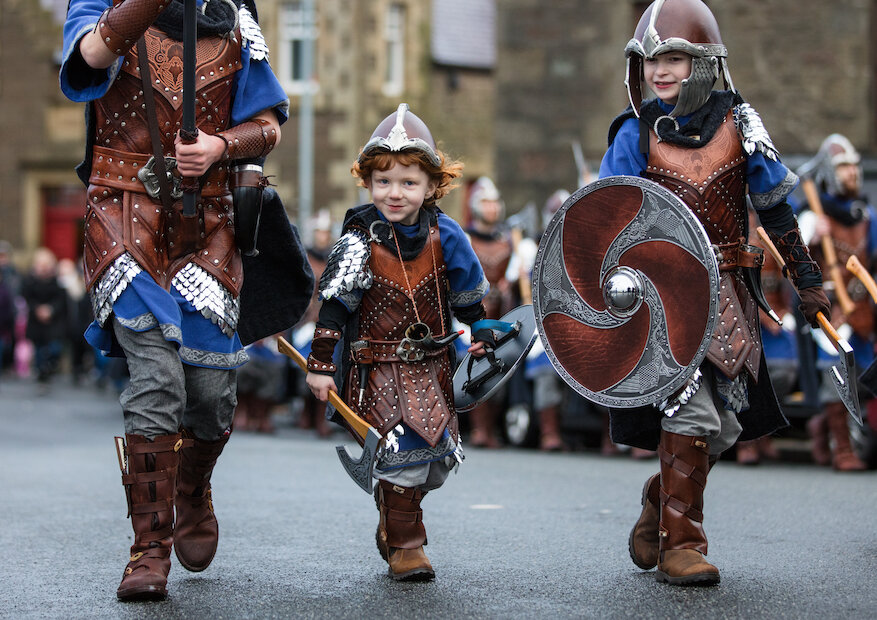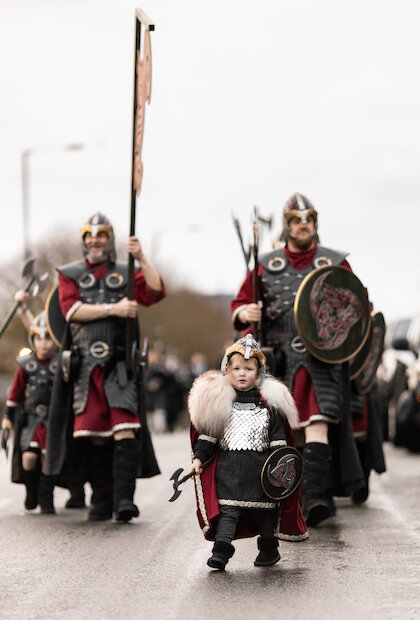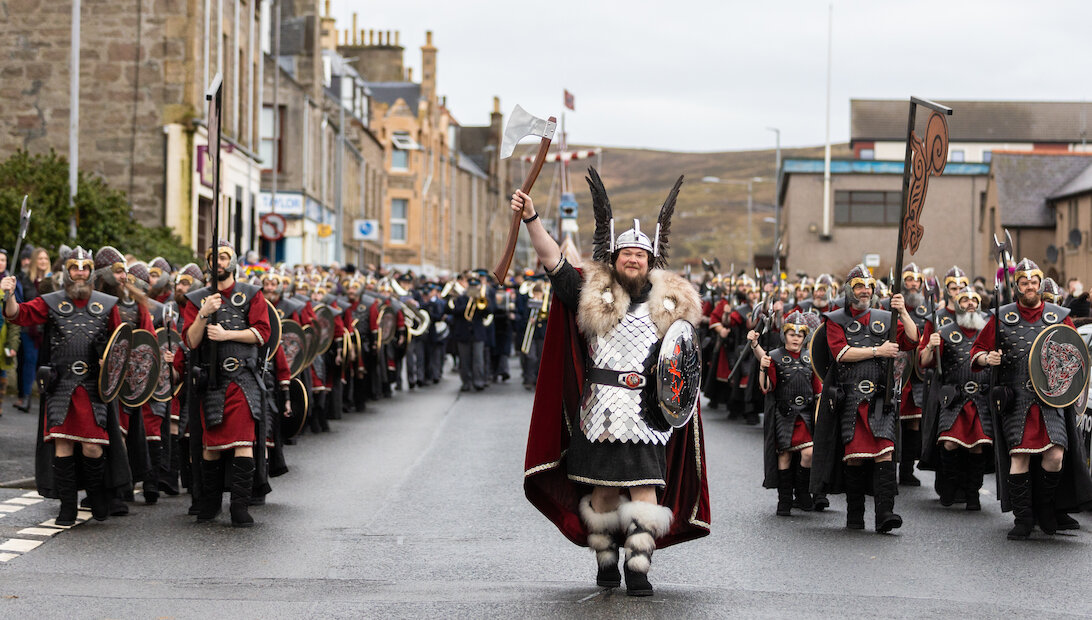What actually happens at Up Helly Aa?
Lerwick’s Jarl will have been planning (and saving up for) the longest day of their life for 15 years or more, before donning a raven-winged helmet, grabbing axe and shield, and embarking on a 24-hour sleepless marathon. Along with the rest of the committed, volunteer crew, the Guizer Jarl will have spent thousands of hours planning and preparing each and every detail of Up Helly Aa and its associated events, until the big day dawns.
On the evening of Up Helly Aa Day, almost 1,000 heavily-disguised torch-bearers, in groups, known as ‘squads’, form ranks in the darkened streets of Shetland’s capital. Only the lead, or Jarl's Squad, wears Viking dress. The rest are in costumes ranging from the almost sublime to the totally ridiculous.
Even those not taking part in the torchlight procession can play a huge part in the festival – organising, hosting at the halls, preparing and catering, and having a wonderful time in what, for many, is the social highlight of the year.
There is always lots of dancing, seeing old friends, and enjoying the occasional drink in what was originally an entirely ‘dry’ festival aimed at encouraging abstinence. Officially, in some halls more than others, it still is!
Each guizer shoulders a stout fencing post, topped with paraffin-soaked sacking. On the stroke of 7.30pm, a signal rocket bursts over Lerwick Town Hall. The torches are lit, the band strikes up and the amazing, blazing procession begins, snaking half a mile astern of the Guizer Jarl, standing proudly at the helm of his doomed replica longship, or 'galley'.
It takes half an hour for the Jarl's Squad of Vikings to drag the galley to the burning site, through a crowd of 5,000 or more spectators.
The guizers circle the dragon ship in a slow-motion Catherine Wheel of fire. Another rocket explodes overhead. The Jarl leaves the galley, to a crescendo of cheers. A bugle call sounds, and then the torches are hurled into the lovingly-crafted vessel.
As the inferno destroys four months of painstaking work by the galley builders, the crowd sings 'The Norseman's Home' – a stirring requiem that can bring tears to the eyes of the hardiest Viking.
Tears of mirth are more likely as the night rolls on and more than 40 squads of guizers visit a dozen halls in rotation. They're all invited guests at what are still private parties – apart from a couple of halls where tickets are on sale to the general public.
At every hall each squad performs its 'act', perhaps a skit on local events, a dance display in spectacular costume, or a topical send-up of a popular TV show or pop group.
Every guizer has a duty (as the 'Up Helly Aa Song' says) to dance with guests in the hall, before taking yet another dram, soaked up with vast quantities of mutton soup and bannocks.
